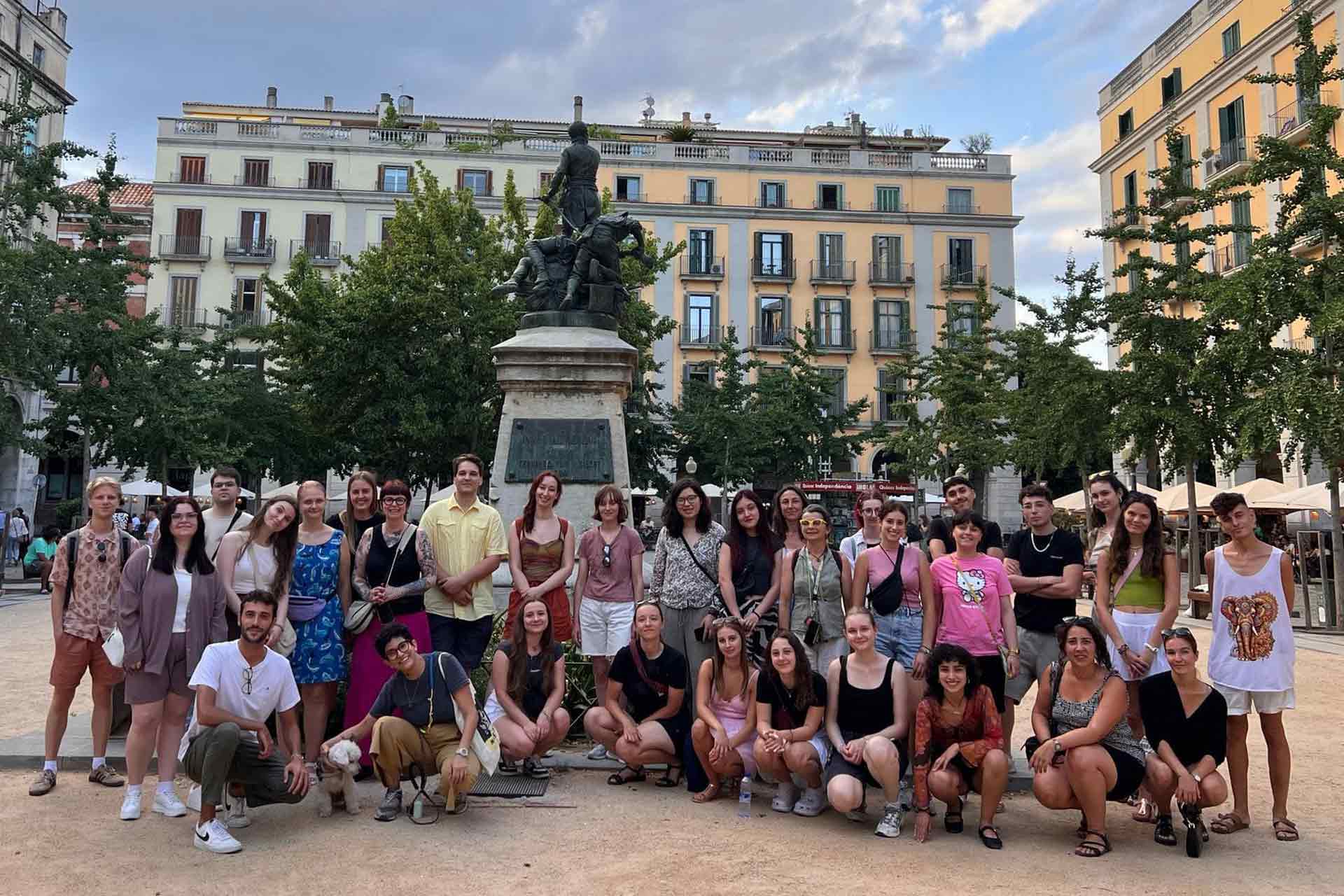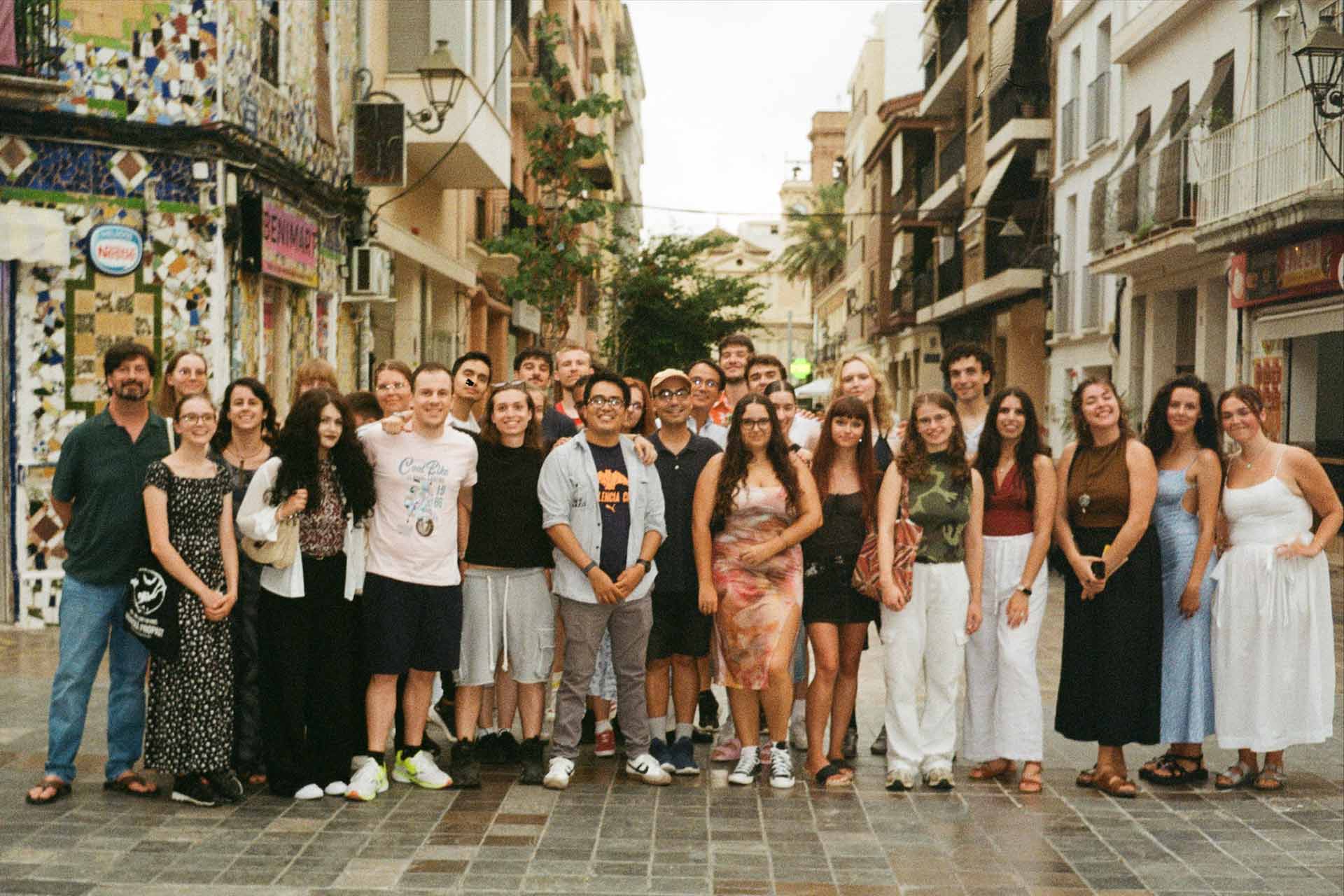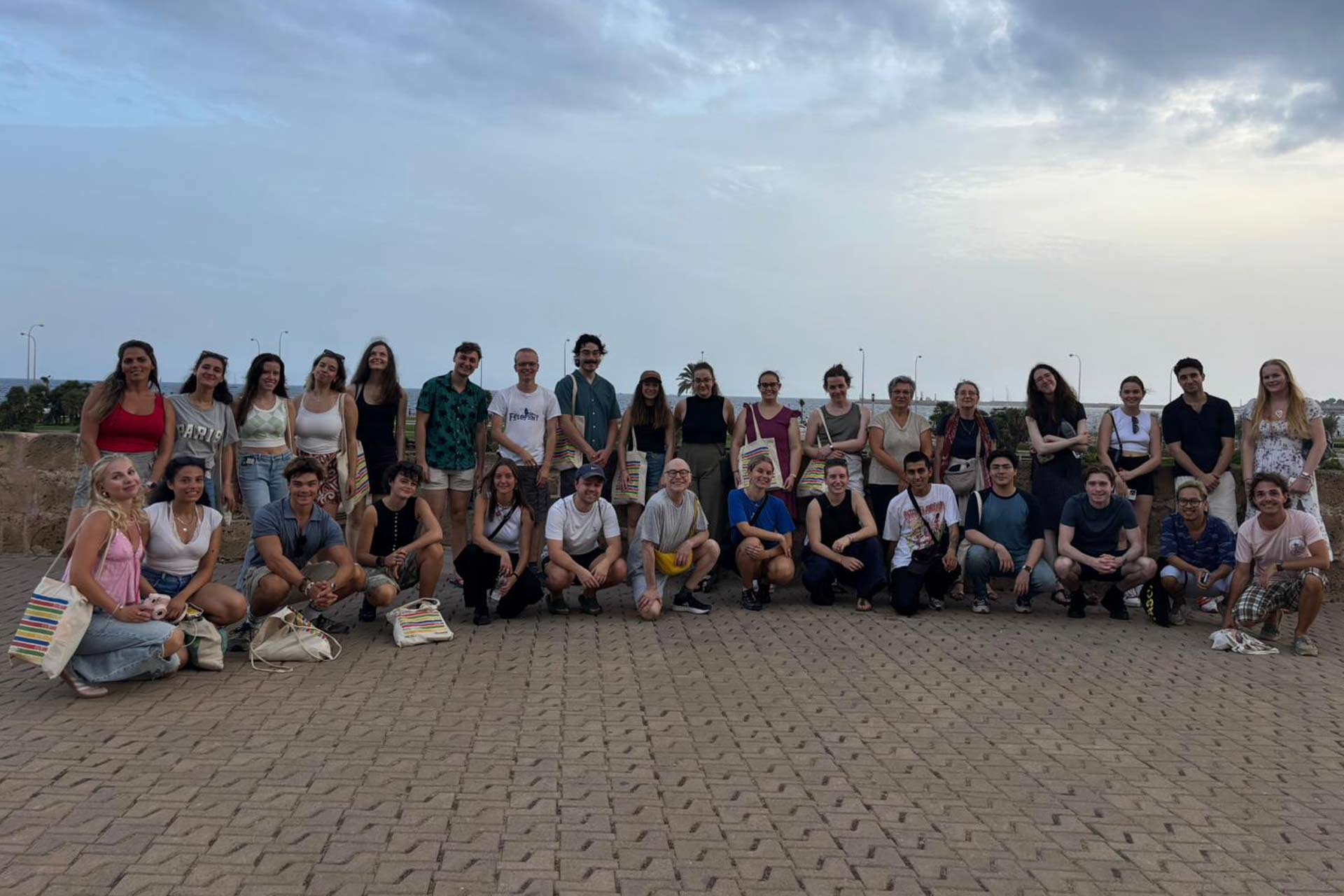
Catalan is an active and globally recognised language, with over 130 universities worldwide offering courses in Catalan language and culture. It is mainly spoken in four southern European countries: Spain, Andorra, France, and Italy. Last summer, three students of the Catalan language attended a free two-week course in a Catalan-speaking region, organised by the Institut Ramon Llull, an institution with which the University of Liverpool has a long-standing relationship. Read on to hear about their experiences!
Aimee – Final-year student, Hispanic Studies and Italian
This July, I took part in Institut Ramon Llull’s Estada Lingüística in Valencia. For two weeks, I stayed in the centre of Valencia in the Rector Peset University Campus building and studied the language with 30 other students from around the world!
During the course, we had around 25 hours of in-class time, making the stay intense, but super enriching to my learning. When we weren’t in class, we were on trips to places like the Cathedral and the Llotja de La Seda, where we learned about the history and architecture of these emblems of Valencia, and the Valencian language academy, where we learned about the standardisation and protection of the language. We also went to a nearby beach town, La Vila Joiosa, and the Central Market, where we practised the language we had learnt in class with the vendors. We also attended Catalan conferences, met movie directors, authors, and saw musical performances, showcasing how they use Catalan/Valencian in their work. Everywhere we went, we were guided by tour guides who were immensely knowledgeable in their areas. I was able to learn more about Valencia than I ever imagined, and learning in the Valencian language felt really special and enriching.
The course was free for students studying Catalan at their home universities. It included accommodation, meals, and trips, and was provided by the Institut Ramon Llull to promote the use of Catalan internationally. I found the course improved my Catalan, especially my confidence using it in conversation or in shops/restaurants, which I really wanted to be able to do. I think it’s amazing that I was able to learn and experience so much of Valencia for free! I also got to spend two weeks making friendships with lovely, like-minded people, and preparing myself for my final year of language studies at Liverpool, making it a really great use of time during the summer. I highly recommend giving Institut Ramon Llull’s Estada Lingüística a go!

Annalyse – MA in Translation
This summer, I was given the incredible opportunity to build upon my year of learning Catalan in Liverpool through the Institut Ramon Lull’s Campus Universitari, which is held in Girona and Andorra for two weeks. The Campus Universitari provided me with an immersive experience to improve my Catalan language skills, with a heavy focus on speaking, and to learn more about Catalan culture and how this intertwines linguistically.
The first week was spent in Girona, taking Catalan language classes in the mornings, participating in cultural enrichment activities in the evenings and weekends, which allowed us to explore and further get to know the city and region. We were able to get hands-on learning through cooking workshops, connect with famous Catalan artists through a tour of Dalí’s home in Cadaqués, and understand the artistry of winemaking in a visit to La Vinyeta.
We then travelled up to Andorra to settle into our second week of cultural immersion. In Andorra, we were able to watch the spectacular performances of Andorra’s own Cirque du Soleil, take a moment of relaxation from our busy schedule at Andorra’s famous thermal water spa, Caldea, while taking in the magnificent landscape and venture through it with a hike through the country’s mountains. Our morning classes took a more creative approach to language learning. We combined imaginative activities, such as making our own film trailers, with the fundamentals of grammar and accentuation to develop our Catalan language skills. After our classes, we had conferences on Catalan culture, such as the development of contemporary Catalan music, and the political state of the language in Andorra.
This was an extremely challenging course, especially since I often found myself confusing Catalan with Castilian Spanish due to my familiarity with Castilian. Nevertheless, it proved to be an enriching and invaluable experience, despite the difficulties that I faced. The Campus Universitari Girona i Andorra allowed me not only to deepen my linguistic skills but also to connect with inspiring people who share a passion for the Catalan language and culture.

Vaughan – Hispanic Studies graduate and MA in Translation student
From September 7–19, I had the wonderful opportunity to visit Palma de Mallorca in the Balearic Islands to study the Catalan language and learn about the island's history, literature and culture. We stayed in the city centre, where the accommodation and breakfast were all paid for. In the accommodation, we were matched up with people from all over the world who had also applied to attend the course. I stayed in a room with a Brazilian and a Mexican, so I wasn’t speaking English at all when we were all together in the room. Furthermore, the other students were keen to practice their Catalan, so rather than speaking English or Spanish, we would all communicate in the target language, Catalan.
The lessons focused on integrating Catalan through exposure to Mallorcan literature and music. We analysed poems from different Balearic poets and listened to songs which highlight linguistic variation in their lyrics and in one lesson, we even studied the sociolinguistics of mallorquí in a diglossic environment, in which we created our own TikTok videos to promote the Catalan language.
On the last day, we were tasked with interviewing strangers on the streets about Catalan (their dialect), how they feel about its relationship with Castilian, whether they speak Catalan or Castilian more frequently, and which they thought was the ‘main’ language of the island.
When we weren’t in the classroom, we were going on trips to culturally relevant areas around the island. We first travelled to the southeast of the island to a place called Santanyí, to visit the house of a Mallorcan poet and novelist, Blai Bonet, where his work was portrayed. Next, we visited the west of Palma to Cala Major, to see the artwork of Catalan artist, Joan Miró, who often delved into abstract art. And lastly, we went to the northeast, to Capdepera, to see the castle of Capdepera, in which we were given a tour of the castle and the surrounding area. We also had plenty of time to visit the beach! The beaches at Capdepera and Cala Major were beautiful and were great ways to end such insightful days.
I had a great time on l’estada lingüística, I met lots of new friends and learnt a lot of Catalan in such a short amount of time. The course was quite intense; however, the idea was to get people speaking and listening as much as possible, as this is seen as an effective way to acquire a language. Moreover, not only was it highly informative, but it was really fun too! It was so interesting discovering so much about the island's culture and dialect, and it has given me a different outlook on the island as a whole. For me, it is no longer merely a holiday destination, but a region rich with culture to which I would love to go back and discover even more about.
